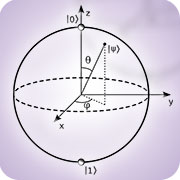
Researchers from several universities recently developed a technique to record the quantum mechanical behavior of one electron in a nanoscale defect in diamond.
The team, led by David Awschalom of the University of Chicago, used ultra-fast pulses of laser light both to control the defect’s entire quantum state and to observe how the state of one electron in the defect changes over time.

“This experiment uses a ‘trapped’ electron contained within the negatively charged NV (nitrogen vacancy) center,” Awschalom told TechNewsWorld. The isolation of the NV center from its diamond environment “results in a well isolated trapped electron whose spin state can be used as our qubit.”
Their research ultimately could accelerate the development of quantum computers — the current Holy Grail in the computing field — because it will be easier to identify materials that have the appropriate quantum properties.
“Quantum computing is still pretty much pie-in-the-sky technology, but the manner in which it leverages physics and the world around us … holds huge potential,” Jim McGregor, principal analyst at Tirias Research, told TechNewsWorld.
“The potential for quantum technology is the ability to scale computing solutions exponentially because of the almost infinite number of states, rather than focusing on simple ones and zeros,” he continued.
Diamonds Are a Scientist’s Best Friend
A nitrogen vacancy, or NV center is one of a number of point defects in diamond.
“Researchers focus on the imperfection in diamonds because it is a well-known and rather isolated solution that can be leveraged for research around quantum technology,” McGregor said. “Diamonds have long held potential in computing solutions because of their physical structure.”
Sharp resonances in the intensity and wavelength of NV centers’ photoluminescence can be created at room temperature by applying a magnetic field, electric field, microwave radiation or light — or a combination of these.
The resonances can be explained in terms of electron spin-related phenomena — such as quantum entanglement and spin-orbit interaction — and analyzed using quantum optics theory.
What the Researchers Did
The researchers hit an NV center with two extremely short pulses of laser light, each lasting less than a picosecond.
The first excited the quantum states of an electron in the N-V center, causing it to change or evolve. The second stopped the changes.
By progressively extending the elapsed time between the pair of laser pulses, the researchers obtained a series of snapshots of the electron’s quantum state over time. The elapsed time can range from femtoseconds to nanoseconds.
“This technique allows us to control the spin state of the electron within the N-V center using light,” Awschalom said. “This now allows us to reduce the footprint of our devices from ~20 micrometers down to the ~1 micrometer spot size.”
This technique can be used to probe and understand other qubit systems, Awschalom said.
Why Quantum?
The notion of quantum computing has excited interest among businesses, scientists and the U.S. military.
Google is looking into quantum computing to help it sort through the billions of searches it conducts daily.
In addition to breaking through the barrier of binary representation, quantum computing directly uses phenomena in quantum mechanics such as superposition and entanglement to work on data.
Researchers want to use quantum properties to represent data and to perform operations on them.
Where We Go From Here
To create and install lasers like this in quantum computers, we “would be talking about a massive increase in computing performance and computers that could be far more flexible and handle a massive number of parallel computations in much smaller form factors,” Rob Enderle, principal analyst at the Enderle Group, told TechNewsWorld.
Heat dissipation and shrinking the size of the components are surmountable problems because “we are working at microscopic levels and our ability to dissipate heat has improved a great deal over the last couple of decades,” Enderle said.
However, it’s premature to talk about applications at this stage.
Researchers “are learning a great deal about how these small elements behave,” Enderle said, “and this knowledge would affect work ranging from quantum computing to the creation of things at a microscopic level.”






















































